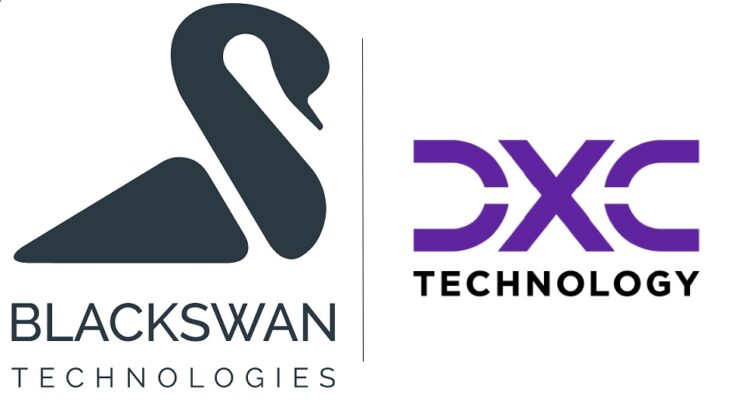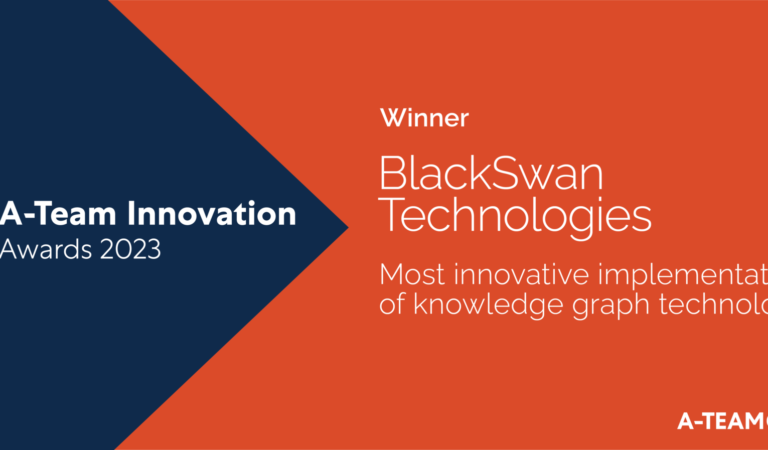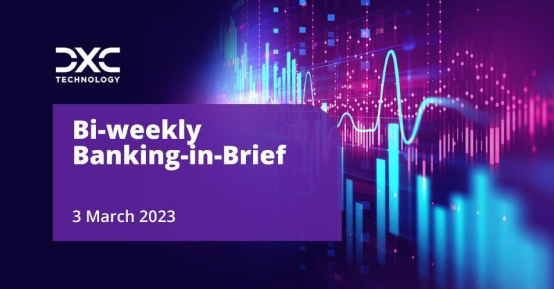
Apr. 27, 2023
How the Data Fabric Can Help Firms with Financial Compliance
This article was prepared in association with DXC
By Gregor Duschkin @BlackSwan Technologies
The Data Fabric can help banks achieve data freshness, accuracy, and quality, enabling actionable insights
The IT industry has long used analogies to describe the way information is collected and analysed; beginning with data warehouses, and shifting to the data lake and most recently, to the data fabric. To understand what it is that the data fabric provides an organisation, it’s worth diving into the analogy itself. If we think about how a patchwork quilt is knitted together, it involves stitching together many different parts to create a fabric. Each colour patch can easily be found on this fabric, rather than having to look through a box full of patches and creating a new quilt every time.
Likewise, the data fabric resembles how disparate data sources can be weaved together to create an overview of an entire enterprise. It is a network of information which is catalogued, taking the complexity out of discovering and accessing the highest quality data – and as we know, an organisation’s data strategy is only as good as the quality of the data being used.
The data fabric is not a single technology, but rather an architecture which should have the following capabilities:
· Automated Data Orchestration
· Dynamic Data Integration
· The ability to sync data on-demand with bi-directional connectors
· AI/Machine Learning algorithms enriched with Active Metadata
· Analytics over a connected Knowledge Graph to ‘Activate Metadata’
· Data Virtualisation, which points to all data sources, making them accessible from wherever they are, ensuring that data duplication does not occur
· Data Enrichment, which enables firms to continuously discover relevant entity data from internal and external sources
· Universal Access Controls, with owner-defined controls for data access and quality
· A Product Catalogue which simplifies the sharing of data across applications and facilitates the reuse of data across the organisation (with the relevant permissions).
· A Data Catalogue which represents all metadata within a connected knowledge graph
The fabric is virtual, meaning datasets can be accessed, viewed and analysed on-demand, allowing teams to pool together the data they require for any project from various silos without impacting existing applications and infrastructure. A sophisticated Data Fabric can determine which information is the most accurate and up-to-date, meaning the data is in the prime position for the next stage, which is to glean insights from it.
The positive impact of a Data Fabric approach on Compliance
At the heart of the compliance challenge for financial services firms is data; Know Your Customer or Client (KYC), Screening and Transaction Monitoring all require firms to pull together data from a variety of sources and ensure the data is up-to-date and accurate. Banks also have to make sure that new sources of data – such as new sanctions lists – required to keep up with regulations can be easily integrated, and that the quality and trustworthiness of the data is high to reduce false positives. With high data volumes, large disparate data sets and copious amounts of manual work, organisations currently face an uphill task in being able to accomplish this. Here is how a Data Fabric can help them overcome existing obstacles:
· KYC
Firms are tasked with collecting data for banking customers for multiple business units and jurisdictions, to get a clear picture of a specific profile including the identification of the Ultimate Beneficial Owner (UBO), and ultimately meet KYC remediation deadlines. Certain customers may have interacted with a number of different business units within the organisation, each of which has different operational systems and this leads to the data multiplying, duplicating and becoming unsynchronised across the multiple, disconnected systems.
Subsequently, this duplicates the work required, which means they’re not connected and that the enterprise is increasing its risk exposure.
A Data Fabric can help firms point to the appropriate data sources across different departments and jurisdictions and access the data – without the need for replication. That means pulling the data from a multitude of systems, including from data lakes and data warehouses. Firms can then enrich the knowledge base using relevant structured and unstructured data, metadata, open source intelligence and paid-for sources. This approach would enable teams to know when the data has been shared and duplicated, and incorporate additional unique identifiers to ensure the data used to build a profile is the most accurate.
Using this method, organisations can ensure they don’t miss critical updates to a profile. As data is more easily accessible and integrable, the method would lend itself to an automated approach of monitoring and updating data values when there are changes to a client profile.
· Screening
Banks are striving for a system that enables real-time screening, integration with multiple data vendors that provide watchlists, and the ability to define their own screening logic within one system. A Data Fabric can integrate multiple data providers and data sources, enabling firms to gain comprehensive coverage that any data provider would be unable to offer alone. This subsequently allows them to shift from a user-licence model to a more cost-effective, data-only licence model.
· Transaction Monitoring
As a Data Fabric accesses data directly from original sources, it means the data is the most up-to-date. The quality of the data assists firms in identifying the entities involved in the transaction if unknown, and can ensure the accurate status and location of a transaction. This helps users to spot anomalies and reduce false positives. A Knowledge Graph can allow firms to visualise links between the data points of entities and transactions to detect fraud and money laundering. The Knowledge Graph can also uncover hidden networks and shell companies during deeper investigations. Meanwhile, complex patterns can also be identified using AI.
The Data Fabric is the starting point
Enterprises can use data platforms which have already incorporated the Data Fabric approach as the starting point of their Financial Crime Compliance efforts. By enabling better discovery, access and quality of data, organisations can proceed with the next stage of using Knowledge Graphs, analytics and AI to better understand the data and use this information to make better decisions. This will ultimately help enterprises to meet deadlines, fight financial crime and comply with regulations.
Gregor Duschkin is SVP of Customer Success and Partnerships at BlackSwan Technologies. He has over 25 years of experience across a range of business functions such as consulting, IT services and BPO, and in numerous roles from strategy and sales to digital transformation. In his roles, he has established trusted relationships as a respected partner and negotiator with senior customers and other stakeholders. 
Schedule a briefing, request a demo and plan a proof of concept by emailing us here.
Learn more about partnerships by getting in touch.
Find out more about ELEMENT of Compliance™
Follow BlackSwan on Twitter and LinkedIn


